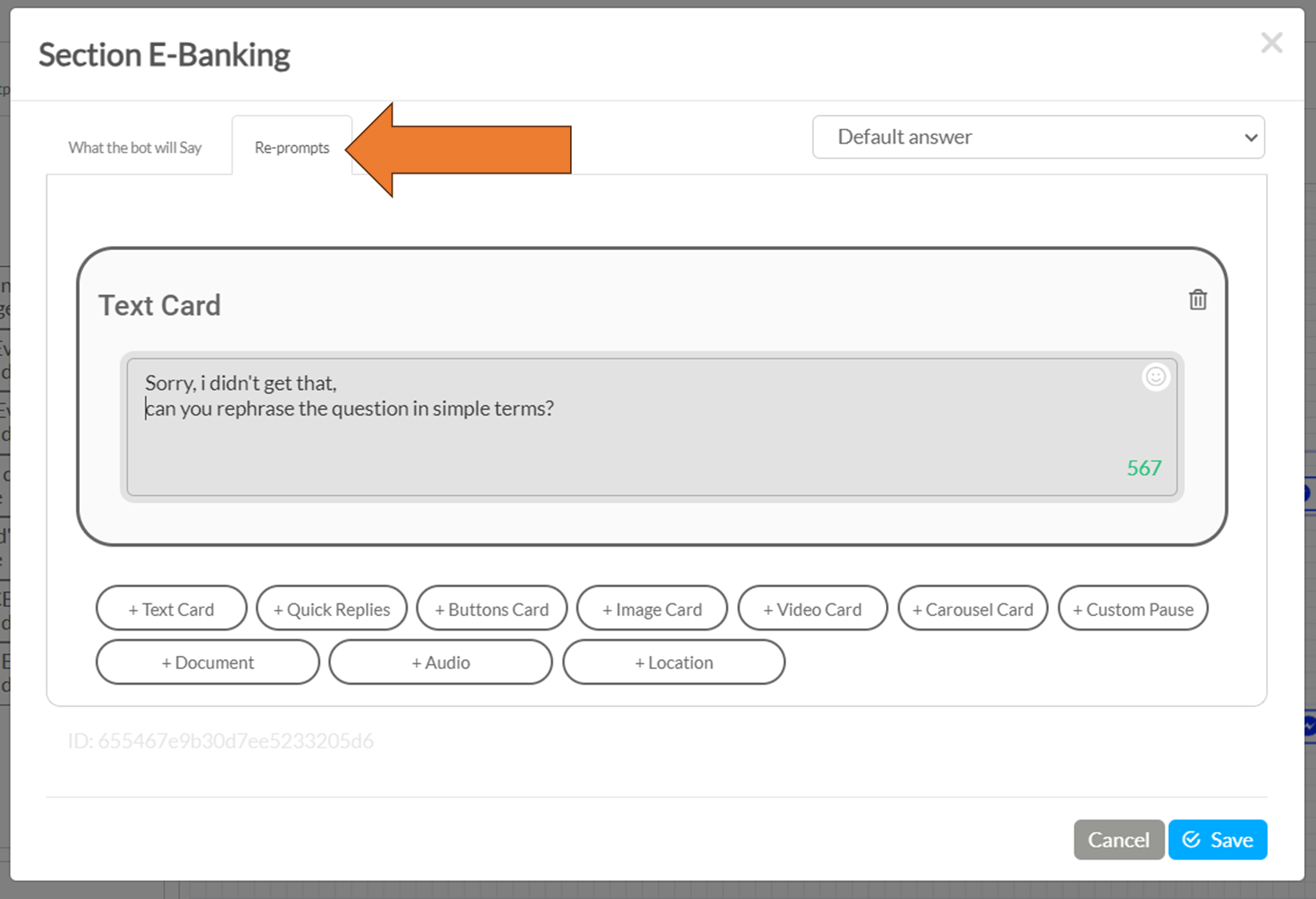Reprompt messages
In the rapidly evolving world of technology and customer service, chatbots have emerged as a pivotal tool. However, the key to a seamless user experience lies in how these chatbots handle situations where they fail to comprehend user input. Smartly.AI, a leading chatbot platform, addresses this challenge with its innovative reprompt messages. This article explores the intricacies of these messages and guides you on how to use them effectively.
Understanding Reprompts
Reprompt messages are an essential tool in any chatbot's arsenal, designed to keep the conversation flowing even when the bot encounters an unfamiliar user input. Smartly.AI offers two types of reprompts: general and specific, each serving a unique purpose in the conversation flow.

The General Reprompt
The general reprompt in Smartly.AI acts as a safety net, ensuring that the conversation doesn't come to a halt when the bot is unable to understand the user. Configurable in the "Reprompt Message" section of the welcome message, this general response is the bot's default reaction to unrecognized inputs. It's a critical feature, maintaining engagement and giving the user guidance on how to proceed.
Specific Reprompts
Where the general reprompt is a one-size-fits-all solution, specific reprompts in Smartly.AI are tailored responses, triggered by particular stages in the conversation. For instance, if the bot expects a phone number and receives an incompatible input, a specific reprompt like "It seems that the phone number entered is not valid. Please enter your phone number in the format 0X XX XX XX XX" can be used. These context-aware messages not only aid in data collection but also enhance the user's conversational experience by providing clear and relevant guidance.
Specific Reprompts can be definied by:
1 - Opening the specific state of your conversation flow where you need the special reprompt
2 - Define the desired message for this step
Configuration Tips
While reprompts are vital, their strategic placement is key. Overusing them can overwhelm the user, while sparse use might lead to a frustrating experience. Balance is crucial. A general reprompt in the welcome message and a few well-placed specific reprompts can significantly improve the chatbot’s performance. Additionally, leveraging Smartly.AI's capability to include rich content like links and buttons in these messages can further enrich the interaction.
Conclusion:
Reprompt messages are not just a fallback mechanism; they are an integral part of crafting a responsive and user-friendly chatbot experience. In Smartly.AI, these messages are tools of engagement and clarity, ensuring that each interaction with the bot is as productive and smooth as possible. By strategically deploying general and specific reprompts, one can significantly enhance the efficiency and effectiveness of their chatbot.
Updated 3 months ago
